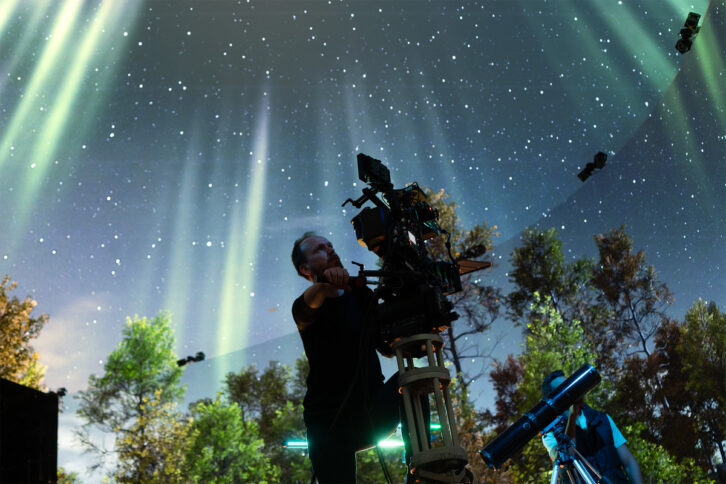With important media events in international sports and political arenas on the horizon and an increased focus on sustainability, 2024 will see the cementing of many technologies powering the media and entertainment industry. Sustainability, cloud and virtual production, IP-based networks, 5G, high image quality, AI, the metaverse and security are moving from buzzwords to bizwords generating new revenue streams for those harnessing such technologies.

Virtual production studios will see a net growth in 2024, in part due to the immense carbon footprint savings they allow, but also because of the convenience and creativity the technology opens for actors and producers alike. 2024 will see the fruits of the experiments, education, and latest technical developments designed to tackle common problems with virtual production and to support quality In-Camera VFX, come to bear.
Cloud, and closely related AI, will continue to dominate conversations around workflows, business models and resources. However, rapidly improving cloud technology also provides more creative freedom to filmmakers efficiently. By being able to create, share and store high-quality content virtually, content creators will be able to be more creative in a less expensive and less time-consuming way.
Security will continue to be a significant topic as more content is managed through the cloud. ‘Zero trust’ systems, where strong identity verification is required to access files, are being used more and more. These systems require verification at every stage of a digital interaction, meaning one password does not provide access to all files, something which could be serious if storing sensitive content.
IP-based workflows for remote and distributed production will establish themselves as a staple in 2024. An increased focus on sustainability means many companies in the broadcast and live sector want to minimise their carbon footprint and costs, through IP.
Thanks to improved technology, IP has become a flexible solution for live production. Remote production is an important part of this, as are Software Defined Network (SDN) and IP connections to broadcast control systems which make local and remote production more efficient and sustainable.
Closely linked to IP-based workflows, 5G transmission will also see increased interest as the technology develops and new alliances are created to further its potential. The availability of 5G networks will continue to grow and with it the benefits of increased speed of connectivity, lower network latency, and the promise of new ways of working through network slicing.
Quality storytelling is being demanded by content-hungry viewers, with 4K TVs and devices becoming commonplace, fuelling the need for content produced natively in 4K or 4K HDR. In the battle for differentiation, sectors such as sports, documentaries or reality shows are turning to traditional cinematic images, that convey greater emotional depth for viewers.
Other image hungry sectors, such as drones using mapping, construction and broadcast will also see the need for compact, versatile, and best-in-class sensors – qualities all embodied in Sony’s first dedicated B2B camera, the ILX-LR1.
Linked to this, the possibilities offered up by the Metaverse mean that content creators from all fronts are looking to monetise and create content suited for the new interactive universe. Quality volumetric content and photogrammetry will be key in providing users with a believable and valued experience.
Probably the biggest driving force alongside business needs, sustainability is at the front of industry minds as viewers are taking more interest in whether content is being produced in a sustainable way from beginning to end and in all layers of production. Whereas 2023 was a year of studying and understanding needs specific to every player in the content industry, 2024 will see Sony’s commitment to reach net zero by 2040 mirrored by many content and media creators taking action to become more sustainable.







